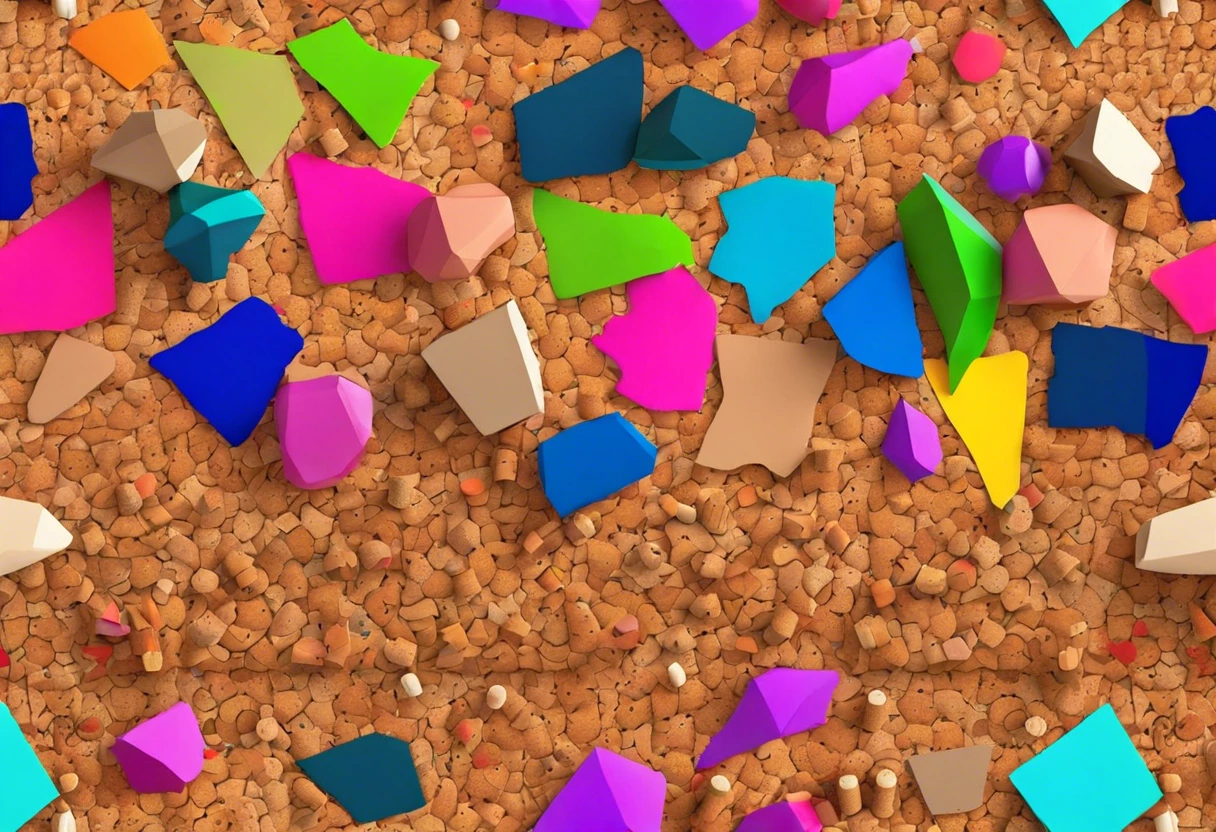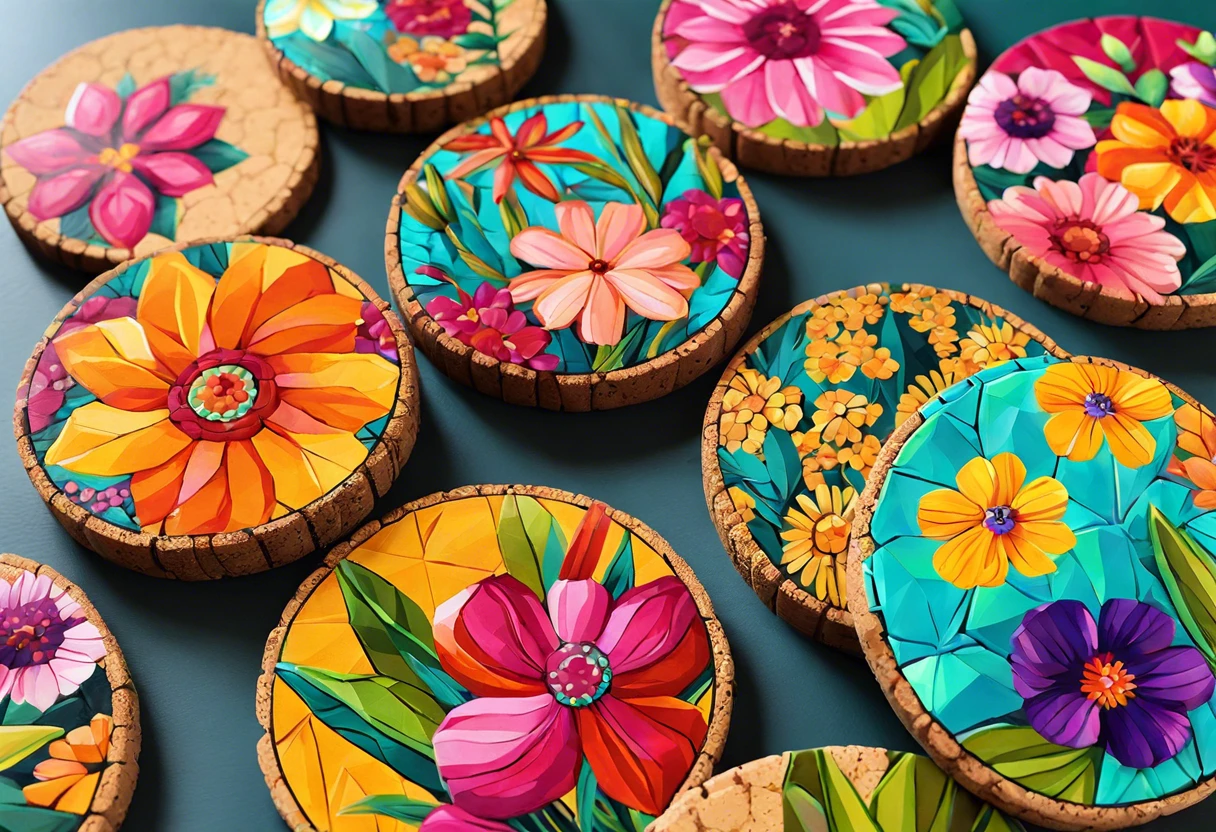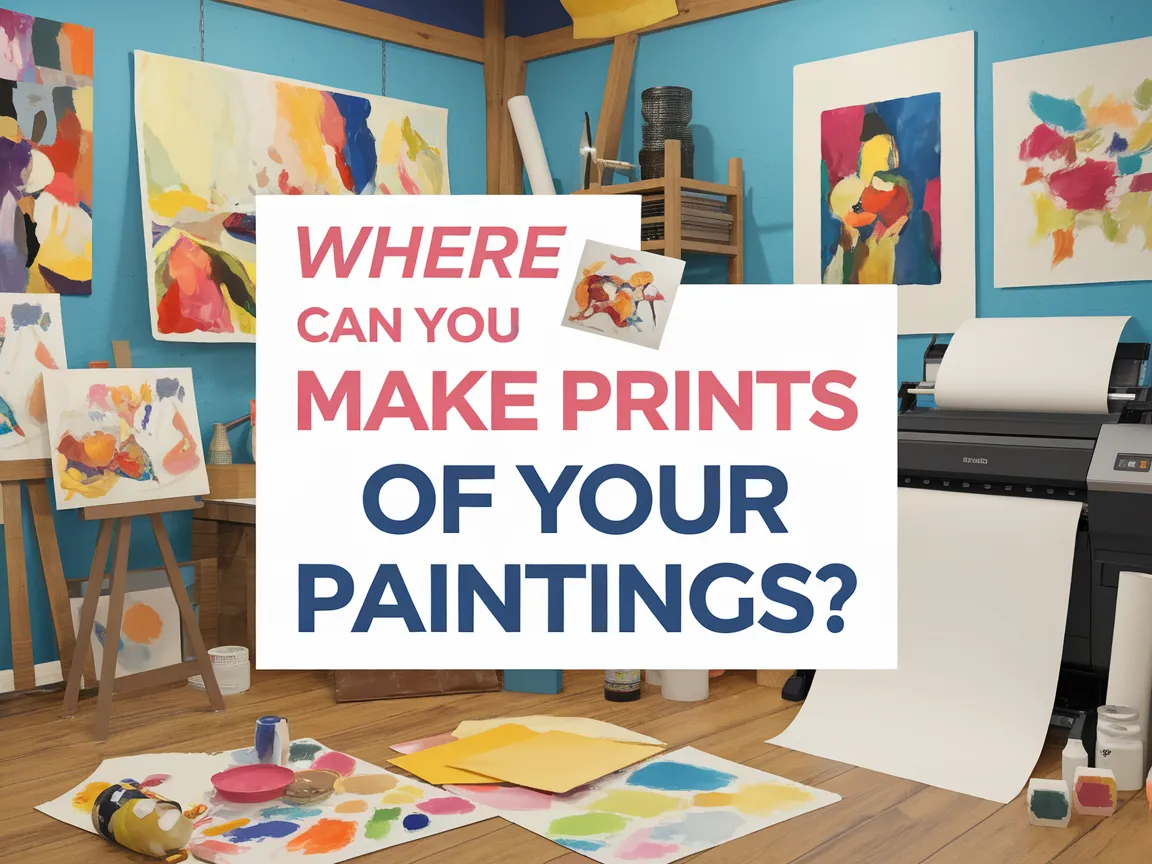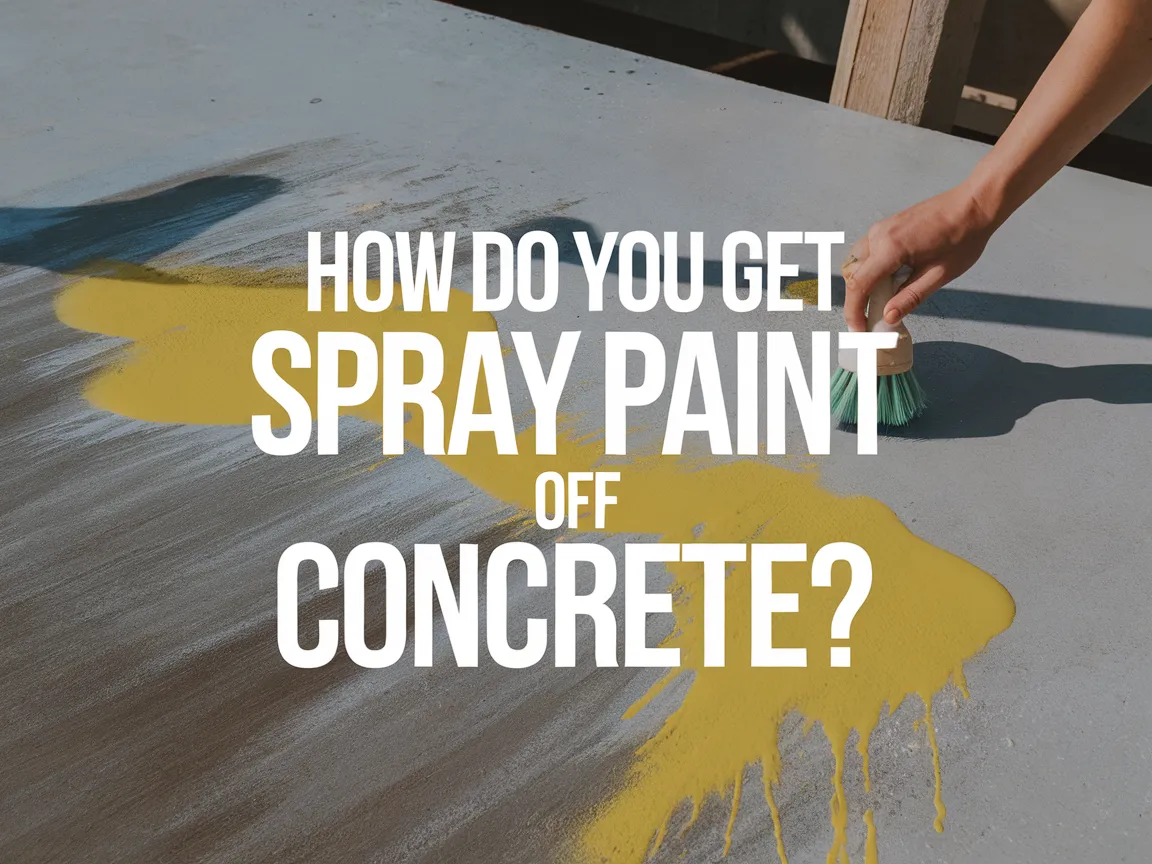Can You Paint Cork?
Published on: April 24, 2025 | Last Updated: January 7, 2025
Written By: Sarah McClintock
Cork comes from the bark of cork oak trees. It’s soft, light, and full of tiny air pockets, just like a sponge!
Can you paint cork? It’s essential to know because painting can really change its look and feel. I once painted some cork tiles for my kitchen, making them pop with color, and it felt like I transformed the whole space!
In this article, I’ll cover what cork is, important things to think about before painting, a step-by-step painting guide, color suggestions, types of cork surfaces to paint, factors affecting the process, common problems, finishing touches for a polished look, and cool DIY ideas for painted cork. Want to know how to paint cork board? I’m excited to share all this knowledge with you!
Contents
- 1 Can You Paint Cork?
- 2 What is Cork?
- 3 Essential Considerations Before You Start Painting Cork
- 4 Step-by-step Guide to Painting Cork
- 5 Tools and Techniques for Painting Cork Effectively
- 6 Types Of Cork Surfaces Suitable for Painting
- 7 Common Issues Encountered While Painting Cork
- 8 Finishing Touches for a Professional Look
- 9 Creative DIY Project Ideas for Painted Cork
- 10 Inspiration for Upcycling Cork into Art
- 11 Frequently Asked Questions About Painting Cork
- 12 Conclusion
- 13 Additional Resources
Can You Paint Cork?
Yes, you can paint cork! Just make sure to use acrylic or latex paint for the best results. Prep the surface by cleaning it. A good prime coat helps the paint stick better to the cork.
What is Cork?
Cork is a lightweight, buoyant material harvested from the bark of cork oak trees, mainly found in Mediterranean regions. It has a density of about 240 kg/m³ (15 Lb/ft³) and is 30% air, making it an excellent insulator and water-resistant.
The Finishing Touch
A freshly painted wall is a blank canvas. The best way to bring your room to life is with a single piece of statement art that ties everything together.
Browse Wall Art at Big Wall DecorYou might wonder about unique projects involving cork. Can you paint it? I’ve experimented with decorating cork and loved the results!
I’ve seen a friend use it for DIY coasters by applying an artistic paint design. Watching that creative process inspired me to explore various techniques with cork. When learning how to paint corkboard, you can enhance its nostalgic charm while preserving its properties—it truly invites creativity! If you’re curious about expanding your painting skills to other surfaces, painting different home accessories can open up even more decorative possibilities.
Essential Considerations Before You Start Painting Cork
What do you need to tackle this project?
- Primer: Use a high-bond primer like KILZ Adhesion. It’s crucial for ensuring the paint adheres to the cork.
- Acrylic Paint: Choose an acrylic paint such as DecoArt Americana. Acrylic is flexible, making it ideal for cork’s texture.
- High-Quality Brushes: Get a set of synthetic brushes like the Plaid 3-Piece Brush Set. These ensure smooth application and minimize brush strokes.
- Sealer: Use a clear acrylic sealer like Minwax Polycrylic. It protects the painted finish and enhances durability.
- Drop Cloth: Lay down a drop cloth, such as an old newspaper or plastic sheet. This keeps your workspace clean while you paint.
We’ve wrapped up key factors to consider before painting cork here. Let us turn our attention to a step-by-step guide.
Also See: How Can You Remove Paint From Concrete? Quick Tips!

Step-by-step Guide to Painting Cork
Here are steps to paint cork effectively.
-
Prepare the Cork Surface
Start by cleaning the cork with a damp cloth to remove dust and debris—this improves paint adhesion. Make sure the cork is completely dry before moving on.
To ensure a smooth surface, lightly sand any rough areas with fine-grit sandpaper (Around 220 Grit). I’ve seen messy results when I skipped this, so don’t rush it!
-
Apply Primer (if Necessary)
Consider using a primer for porous surfaces, like cork. Apply it in thin layers for even coverage; a foam roller works well for this.
Let it dry for about 30 minutes or until fully set. A good primer can make your finish look professional!
-
Select and Apply Paint
Choose high-quality acrylic paint; it’s flexible and won’t warp the cork. I recommend applying it with a brush for details and a roller for large areas.
Apply 2-3 thin coats, allowing each layer to dry completely, usually about 1 hour. You’ll want vibrant colors, so patience is key!
-
Seal the Finish
After the paint is completely dry, apply a clear sealer or varnish. Look for one labeled as water-based to avoid yellowing and stickiness.
I prefer a spray-on sealant for an even finish. Don’t skimp—apply 2 light coats, waiting 1-2 hours between applications. This protects your artwork long-term!
That covers the process of painting cork. Let’s now take a look at tools and techniques for effective cork painting.
The Finishing Touch
A freshly painted wall is a blank canvas. The best way to bring your room to life is with a single piece of statement art that ties everything together.
Browse Wall Art at Big Wall DecorTools and Techniques for Painting Cork Effectively
Using the right tools and techniques makes a world of difference when painting cork!
Must-Have Tools
- Foam Rollers: Perfect for even coverage on larger surfaces. They prevent gunky brush strokes!
- Detail Brushes: Use these for getting into smaller areas. Think around 1-2 inches (2.54-5.08 cm) for precision work.
- Paint Sprayer: If you want a smooth finish, consider using a sprayer. It’s speedy and great for larger projects.
- Sponges: Textured sponges can create unique patterns on your cork. Get creative!
Advanced Techniques
Want to take your cork painting to the next level? Let’s explore a few advanced techniques:
- Stenciling: Apply a stencil to get sharp designs. Lay it flat and brush paint over to keep your edges clean.
- Sponging: Use a sponge to apply a second color for a textured look. It adds depth and character!
- Layering: Don’t be afraid to layer different colors, letting some peek through. It’s an excellent way to add dimension.
- Washing: A color wash can soften your base color. Mix water with paint to create a translucent effect on cork.
Choosing Paint Consistency
Don’t forget: the consistency of your paint matters!
| Consistency | Use Case | Recommended Ratio |
|---|---|---|
| Thick | For texture and deep colors | Use straight from the container |
| Medium | For even coats that cover quickly | Mix 1:1 with water or medium |
| Thin | For washes and subtle layering | Mix 2:1 with water |
These tips can supercharge your cork painting adventure. Have fun experimenting!
So far we covered tools and methods for painting cork. Let’s look at the different types of cork surfaces suitable for painting.
Types Of Cork Surfaces Suitable for Painting
Let’s explore the different types of cork surfaces: natural cork, corkboard tiles, cork roll, and agglomerated cork.
-
Natural Cork
Natural cork is harvested from the bark of cork oak trees. It’s porous and lightweight, making it an excellent canvas that absorbs and holds paint well.
-
Corkboard Tiles
Corkboard tiles are commonly used for pinboards and interior designs. Their structured surface allows paint to adhere easily, offering a smooth, clean finish.
-
Cork Roll
Cork roll is flexible and ideal for large surfaces. It can cover walls or floors, and painting it enables customization without sacrificing its character.
-
Agglomerated Cork
Agglomerated cork combines cork granules with adhesives under heat and pressure. This type is durable and sturdy, making it perfect for a long-lasting painted finish.
I often think natural cork is the best option. Its porous nature absorbs paint beautifully, allowing vibrant colors to shine through and enhance any project.
We have now covered the various types of cork surfaces appropriate for painting. Next, we will discuss common painting issues.

Common Issues Encountered While Painting Cork
When my friend tried to paint cork, the paint peeled right off! Cork’s surface is highly absorbent and slick, complicating adhesion.
To fix this, I suggested using a primer designed for porous surfaces. A good quality water-based primer at a rate of 0.35 L/m² (0.08 Gal/ft²) works wonders. You’ll notice the difference.
Finishing Touches for a Professional Look
After painting cork, apply a sealant like Flex Seal, covering 3–5 m² (32-53 Ft²) per liter. Allow 24 hours for full drying before use.
Inspect for peeling areas, especially at edges and corners. Use a magnifying glass to find imperfections; even small cracks need addressing.
I’d add an ultra-matte spray topcoat to prevent glare and beautifully maintain the cork texture after painting.
The Finishing Touch
A freshly painted wall is a blank canvas. The best way to bring your room to life is with a single piece of statement art that ties everything together.
Browse Wall Art at Big Wall DecorCreative DIY Project Ideas for Painted Cork
Wanna give your space a splash of color? How about creating gorgeous cork wall art or funky cork coasters? These projects are sure to wow!
To whip up cork wall art, grab some acrylic paints, a canvas, and sure, a bunch of corks—think around 20 cost about $10. You’ll spend just a couple of hours, making it a perfect weekend project! If you’re feeling adventurous and want to explore other creative painting techniques, transform surfaces with paint.
You can definitely explore alternatives like painting goboard or pegboard—it’s all about creativity! Personally, I’ve painted cork with metallic sprays; they turn out so chic and add a luxe vibe to any room. When working with various surfaces, it’s crucial to know the proper vinyl painting techniques and safely discard paint containers.
Inspiration for Upcycling Cork into Art
Thinking about how to get creative with your cork? Let’s dive into some fun ideas.
Unique Art Projects with Painted Cork
- Cork Wreath: Craft an eye-catching wreath by gluing painted cork pieces onto a wire frame. It’s perfect for seasonal decor!
- Cork Stamps: Cut shapes from cork to create custom stamps. Dip them in paint for unique prints on paper or fabric.
- Cork Planters: Paint cork sections for small plant pots. It gives a lively look and enhances any garden.
- Coat Racks: Attach a line of painted cork to the wall as a chic coat rack. Functional and stylish!
Fun Ways to Use Painted Cork in Home Decor
Once your cork’s painted, how about sprucing up your home? Here are some ideas:
- Wall Art: Create a textured collage of painted cork pieces for an artistic statement piece!
- Magnets: Cut and paint cork slices; add magnets to the back for cute fridge decorations.
- Desk Organizers: Shape and paint cork into organizers for pens or other small items.
- Cork Garland: String painted cork shapes together to make colorful garlands for parties or home decoration.
Table: Cost Evaluation of Different Projects
| Project Type | Estimated Cost (USD) | Time to Complete |
|---|---|---|
| Cork Wreath | $15 | 2-3 hours |
| Cork Stamps | $5 | 1 hour |
| Cork Planters | $10 | 2 hours |
| Cork Garland | $8 | 1.5 hours |
These projects not only give cork a new life but also add charm to your space. Let’s get crafting—you’ll love it!
Frequently Asked Questions About Painting Cork
Can Cork Be Painted Without Primer?
Yes, cork can be painted without primer, but using one is recommended. A primer helps the paint adhere better and lasts longer, reducing the chances of peeling or fading over time.
What Type Of Paint Works Best on Cork?
Acrylic paint works best on cork. It’s water-based, dries quickly, and provides great adhesion, making it suitable for various surfaces of cork.
How Do I Prevent Peeling Paint on Cork?
To prevent peeling paint on cork, ensure the surface is clean and dry before painting. Using a high-quality primer and paint, along with light sanding, enhances adhesion and durability.
Is Painted Cork Durable for Everyday Use?
Yes, painted cork is durable for everyday use if prepared correctly. Properly primed and painted cork can resist scratches and minor impacts, making it suitable for many applications.
Can I Repaint Over Cork in the Future?
Yes, you can repaint over cork in the future. Ensure the surface is clean, lightly sanded, and possibly primed again for the best results in adherence and finish.
Conclusion
I hope this gave you what you needed. We covered what cork is, essential considerations before painting, a step-by-step guide, recommended color palettes, suitable cork surfaces, factors affecting the painting process, common issues, finishing touches for that professional look, and creative DIY project ideas.
So, can you paint cork? Yes, you can. Just remember to prepare the surface well, choose the right colors, and follow the outlined steps for the best results.
For further insights, visit Paint Answers.
Additional Resources
- Edwards, B. (2012). Drawing on the Right Side of the Brain. New York, NY: TarcherPerigee.
- r/crafts on Reddit: What kind of spray paint should I use on my cork board?
- Can you paint cork? Yep, here are a few tips… | Little Victorian









